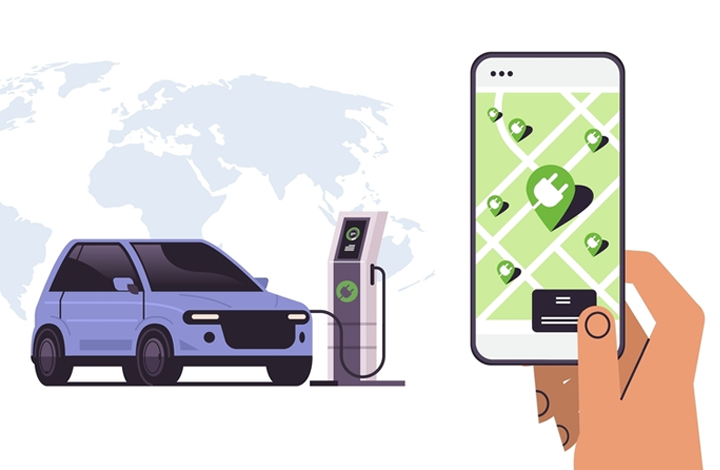In an era driven by sustainability and innovation, the automotive industry is undergoing a transformative shift towards electric vehicles. With this transition comes the need for a robust EV charging station finder app – a digital solution that empowers EV owners and enthusiasts to effortlessly locate charging stations, thus fostering a greener and more accessible future of transportation.
What is an EV Charging App?
An electric vehicle charging app serves as a digital compass for EV users, allowing them to easily discover charging stations within their vicinity or along their route. This app not only displays the locations of charging stations but also provides vital information like real-time availability, charging speeds, compatible connectors, and user reviews. Seamlessly integrating navigation capabilities ensures a hassle-free experience for EV owners seeking to recharge their vehicles.
Why Invest in an EV Charging Management Software?
The rapid adoption of electric vehicles has led to an increased demand for charging infrastructure. Investing in EV charging management software is not only a strategic move for businesses looking to capitalize on this growing market but also a contribution toward a sustainable future.
Cost to Develop an EV Charging Station App
The cost of developing an EV charging station app can vary widely based on factors such as app complexity, platform (iOS, Android, or both), features, UI/UX design, development team rates, and location. A ballpark estimate for a basic app can start from $15,000 to $30,000, while a feature-rich app with advanced functionalities could range from $40,000 to $60,000 or more.
Business Model for the EV Charging Station App
- Freemium Model: Offer a basic version of the app for free while providing advanced features through in-app purchases or subscriptions.
- Advertising: Integrate targeted advertisements within the app, generating revenue from advertisers in the electric vehicle and related industries.
- Charging Network Partnerships: Collaborate with EV charging networks to feature their stations prominently for a fee.
- Subscription fees: You can charge users a monthly or annual subscription fee to use the app.
- Premium Listings: Allow charging stations to pay for improved visibility or featured listings.
- Commissions: You can earn commissions from charging station operators when users book charging sessions through your app.
Key Features of an EV Charging App
The features of an EV app will vary depending on the target audience and the budget. However, some common features include:
- Location-based search: Users can find nearby charging stations.
- Station details: Comprehensive information about each station.
- Real-time availability: Live updates on charging station availability.
- Navigation: Integration with navigation apps for easy route planning.
- Reviews and Ratings: Genuine user feedback for informed decisions.
- Filtering options: Sort stations by connector type, charging speed, etc.
- User profiles: Account creation and personalized settings.
- Payment integration: In-app payments for charging sessions (if applicable).
- Push notifications: Alerts for station availability and status changes.
- Support: In-app customer support for user assistance.
Technology Stack Required
- For Android development: Kotlin
- For iOS development: Swift
- Front-End: React.js, Angular, HTML, CSS
- Back-End: Node.js, Ruby on Rails, Django
- Database: PostgreSQL, MySQL, MongoDB
- Maps and Geolocation: Google Maps API, Mapbox
- Real-Time Updates: WebSocket, Firebase Cloud Messaging
- Payment Integration: Stripe, PayPal
- Analytics: Google Analytics, Mixpanel
Steps to Build an EV Charging App
Gather requirements. The first step is to gather the requirements for the app. This includes understanding the target audience, the features that are needed, and the budget.
Design the app. Once the requirements are gathered, the next step is to design the app. This includes creating wireframes and prototypes to show how the app will look and function.
Develop the app. The next step is to develop the app. This includes coding the backend, frontend, and database.
Test the app. Once the app is developed, it needs to be tested to ensure that it works properly. This includes testing your app on different devices and operating systems.
Deploy the app. Once the app is tested, it can be deployed to the app store.
Conclusion
As the world races towards a cleaner and more sustainable future, the development of an EV charging station finder app is a timely endeavor. By simplifying the process of locating and navigating to charging stations, such an app not only addresses a crucial need in the electric vehicle ecosystem but also positions itself at the forefront of a rapidly evolving market. The synergy of technology, sustainability, and convenience makes this venture not only financially rewarding but also a meaningful contribution to a greener world.
Also read: How Much Does it Cost to Develop an Educational App?


